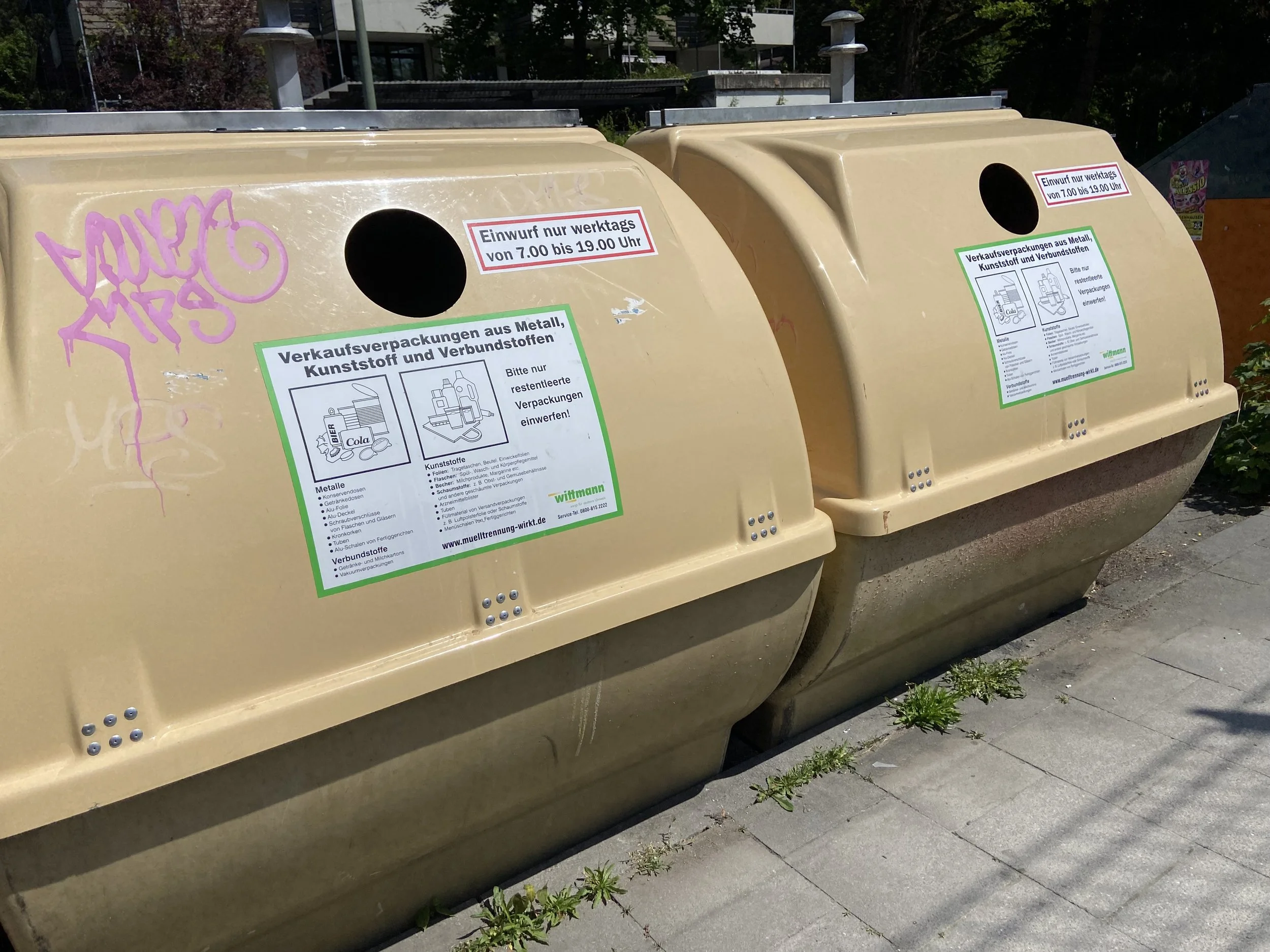Why Germans put art in bins
Or what I learnt as a German language student and how that helped me as a teacher.
The bins… an opportunity for language learning.
Why the bins?
Before I tell you the connection between Germans, art and bins, I suppose I should tell you why I was looking at German bins in the first place and indeed why I was – still am, actually – learning German. I’ll start with the latter and the long and the short of it is essentially that I moved to Germany some 10 years ago to live with my partner. Equipped with close to very little knowledge of the language I signed myself up for an intensive language course and directly or indirectly found myself being immersed in the language, culture and yes, the bins.
Jokes aside, bins actually do play a big part of German culture, a country that laudably places a high priority on recycling. Compared to 36 other countries surveyed, Germany has the highest waste separation rate per capita. This is no coincidence: when it comes to protecting the environment, Germans place a high priority on reducing plastic waste in nature and promoting recycling. But that, indeed, is another article entirely.
What’s relevant here is that there certainly are lots of bins around. During my early days in Munich, I often walked around the city, mulling and half-despairing over the fact that there are three genders in German and not only would I have to know genders but I would also have to then decline my articles into four cases, depending on the gender 🤯. (I generally don’t believe in emoticons in articles, but in this case, I am very grateful for this one).
Putting the ‘art’ in the trash.
A trashy breakthrough
I also found myself looking at signs, adverts, notices, anything written, desperately trying to make sense of all those foreign words. And it was on one of these walks that my eye caught the various labels on the many big, creamy, yellow recycling containers: “Kunstoffe” I read, slowly. Not familiar with the word, I noticed the word “Kunst”, which I knew means “art” in English. Odd, I thought, assuming I had simply got it wrong and that the word had nothing to do with art. But on closer inspection and with the help of pictures on the bins, I realised the word meant “synthetic” or “artificial materials” … and then I saw it, “art” in “artificial” too! As a native speaker of English, I had never broken down the word into parts like that because I had just learnt what the word meant when my brain was young and fresh. But as an adult trying to find meaning in the words, this breakthrough helped me make a connection between the two languages and I never forgot the meaning of the word.
Donkeys and learning
I continued and continue to learn the language, often trying to find such connections and similarities between English and German. It helps, of course, that the languages are similar in many ways. The Germans would call this an “Eselsbrücke”, a mnemonic bridge, but literally a donkey’s bridge. This in turn helped me enormously in my English teaching. I’ve been teaching English as a foreign language for over 20 years now but finding myself in the position of an adult trying to learn a new language made me really see the challenges of doing so. You don’t remember so easily and need these learning aids to help things stick in your brain.
If you’re learning a new language as an adult, or are thinking about learning one, here are some tips on helping you learn:
Find connections: any connection you can make between a word or how to conjugate a verb will help you remember it more easily. I love, for instance, that the conjugation of the English verb ‘to drink’ follows the same vowel progression as German. So drink, drank, drunk, is “trinkt, trank, getrunken”.
Reason things out: While many adult learners are hard on themselves thinking they’ve missed the boat to learn a new language since they are adults now (guilty as charged), the fact that we can analyze and reflect on language rules gives us an advantage over children. Better still, this ability improves with age.
Learn intensively: Intensive learning increases grey matter in the brain so your brain actually changes and learns more if you do intensive learning over a period of time.
Immerse yourself: Exposing yourself as much as possible to the language means you not only pick up language faster, but you also learn it in a specific context. If you can’t go to the country where the language is spoken, watching films, series, going to meet-ups is also great.
Bilingual boost
And finally, if you are bilingual, you’re already a step ahead of monolinguals and learn faster since your brain is used to switching between languages.
Veronica Stivala, Ittra Founder


